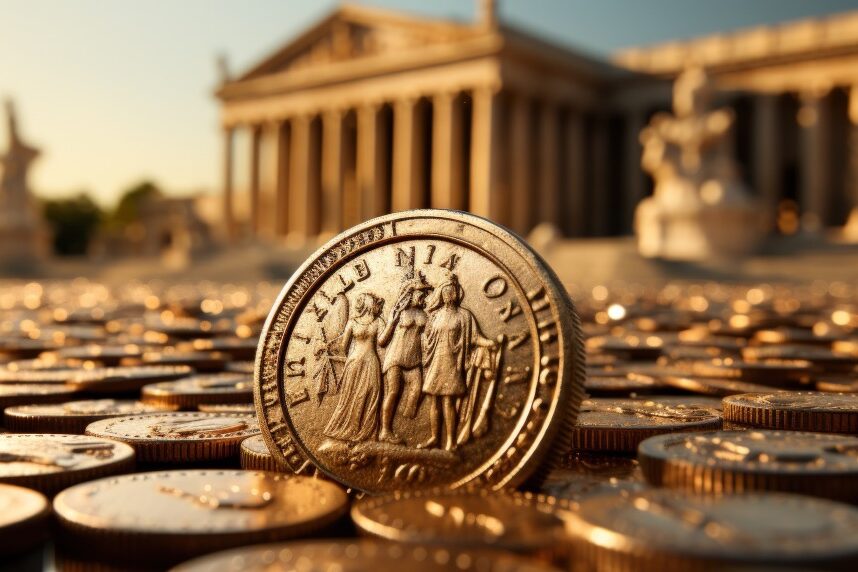Dear Readers,
October, official or not, will always be Italian Heritage Month in the heart of Italo-Americans throughout the United States of America.
In the 500 years since “Columbus discovered America”, thousands of Italo-Americans had made remarkable contributions to the development of the United States and enrichment of the world. Attempts to discredit Columbus were often just distortions by researchers and politicians who wished
to perpetuate the mythology
of Anglo-Saxon superiority or diminish the role Italians played in the development of the United States and magnify the role of others.
***
Columbus was not the only Italian who played a vital role in the history of America. Was it not Giovanni Caboto who first planted the English flag on American soil and gave the English their claim to North America?
By the way, next to the English flag, Caboto planted also the flag of Venice. Amerigo Vespucci (1451-1512), a Florentine sailor and merchant, gave his name Amerigo to America. He entered the service of the Medici and lived until 1496 as their agent in Spain at Seville and Cadiz.
In 1497, he made a voyage from Cadiz, on which, according to his description, he sailed up the Pacific Coast of America as far as what is now called British Columbia. Then came Tonti, the great Neapolitan explorer who ruled over the entire Mississippi Valley for 20 years; and then Father Chino who established the cattle industry of our Southwest (his statue is in the Capitol of the United States); and Vigo, who made possible the acquisition of the whole Midwest; and Mazzei, a man who played a most important role at the beginning of our Revolution and has been acknowledged along with Jefferson as a co-drafter of the Declaration of Independence. What other ethnic group can show such a contribution?
***
“Everybody wants to get into the act!” That trademark quip of the late Jimmy Durante summarizes the perennial question of who really discovered America. There’s no shortage of applicants to the claim, and as shaky as some of them are, the only correct answer to the question sometimes appears to be anyone but Columbus! Here. YOU decide…
THE PHOENICIANS: This race of merchants, also the most skilled and daring mariners of the ancient world, would brave any journey to make their equivalent of a buck. Phoenician ships dominated the Mediterranean for nearly a thousand years, and they almost certainly sailed out into the Atlantic as far as the Azores and British Isles in their search of something to sell or someone to sell it to. Around 600 BC, they completed what was probably their longest voyage, a three year expedition that took them around the entire coast of Africa.
If they could manage that they surely could have handled a trip to America. Some think they did. In 1872, a stone tablet was found in Brazil bearing an inscription in Phoenician characters which read in part: “We are sons of Canaan from Sidon, the city of the King. Commerce has cast us upon this distant shore”. While the authenticity of this and other Phoenician relics uncovered in this hemisphere hasn’t been proven to everyone’s satisfaction, enough bits and pieces have been found to make the Phoenician case an intriguing possibility.
***
THE AFRICANS: A few pieces of pre-Columbian artwork show human figures with distinctly Negroid features, leading to speculation that Africans somehow managed to find their way across the relatively short stretch of ocean between their continent and the coast of Brazil. Sub-Saharan Africans, however, had no maritime traditions to speak of, and it’s been suggested that these figures actually depict Nubian slaves who rowed Phoenician ships.
***
THE EGYPTIANS: Remarkable similarities between Egyptian and ancient Mexican and South American cultures (the building of pyramids, the mummifying of the dead, etc.) have led to speculation that these societies might have been in contact with each other, or perhaps even evolved from a single parent culture.
***
THE CHINESE: Ancient Chinese annals claim that sometime during the 5th century AD, five Buddhist monks embarked on a long voyage over the Pacific, eventually reaching a vast land which they called Fu-Sang.
Hui Shen, leader of the party, recorded descriptions of the peoples and places they encountered, and some of these bear striking resemblance to the geographical and cultural features of ancient Mexico. But other details of his story, such as the presence of wheeled vehicles and horses, neither of which appeared in the Americas before the arrival of the Spanish, cast a grave shadow of doubt over the notion that Hui Shen ever truly made landfall in America.
***
THE POLYNESIANS: Few will dispute the fact that the South Pacific Islanders were top-notch navigators. They had to be in order to have reached and settled in the many isolated islands and atolls scattered across vast Polynesia. Based on this alone, it has been wondered if they might have sailed a little further to reach our western shores in prehistoric times.
***
THE IRISH: The Irish monk, St. Brenden, living in the 6th Century, is reported to have made a number of impressive sea voyages and one of these, according to some, took him all the way to North America. However, no first hand accounts of his adventures survive, and all information on both him and his journeys comes to us from folklore and a semi-fictional “history” written two hundred years after the saint’s death.
***
THE NORSEMEN: These hearty seafarers are actually Columbus’ only serious rivals for the title of who really discovered America. No one doubts today that Leif Erickson and his countrymen did indeed arrive here five centuries before the Italian navigator. In fact, it would be surprising if they didn’t.
More than once, Viking “relics” have been unearthed from the soil of the American Midwest, though in every instance these have proven to be of rather recent vintage, usually planted by Scandinavian-American farmers in fits of overzealous ethnic pride.
***
In any case, neither Leif Erickson nor any other Viking, themselves barely a notch above barbarians, succeeded in establishing a permanent settlement on American soil. By the close of the 11th century, any footholds that they did attain here had utterly vanished. With that, awareness of the existence of the Americas rapidly faded into the misty legends of their semiliterate culture. And, of course, that is the all-important pivot on which favor turns toward Columbus.
The arguments for others who supposedly preceded him here are either supported on the flimsy framework of speculation and mythology, or as the case of the Norsemen, are rendered hollowed by the fact that they proved to be of little historical consequence. The fact is that when Columbus found America in 1492, it remained found…and the world was changed forever…
***
“Columbus Day” by any other name above all is a celebration of our Italian Heritage in America.





























